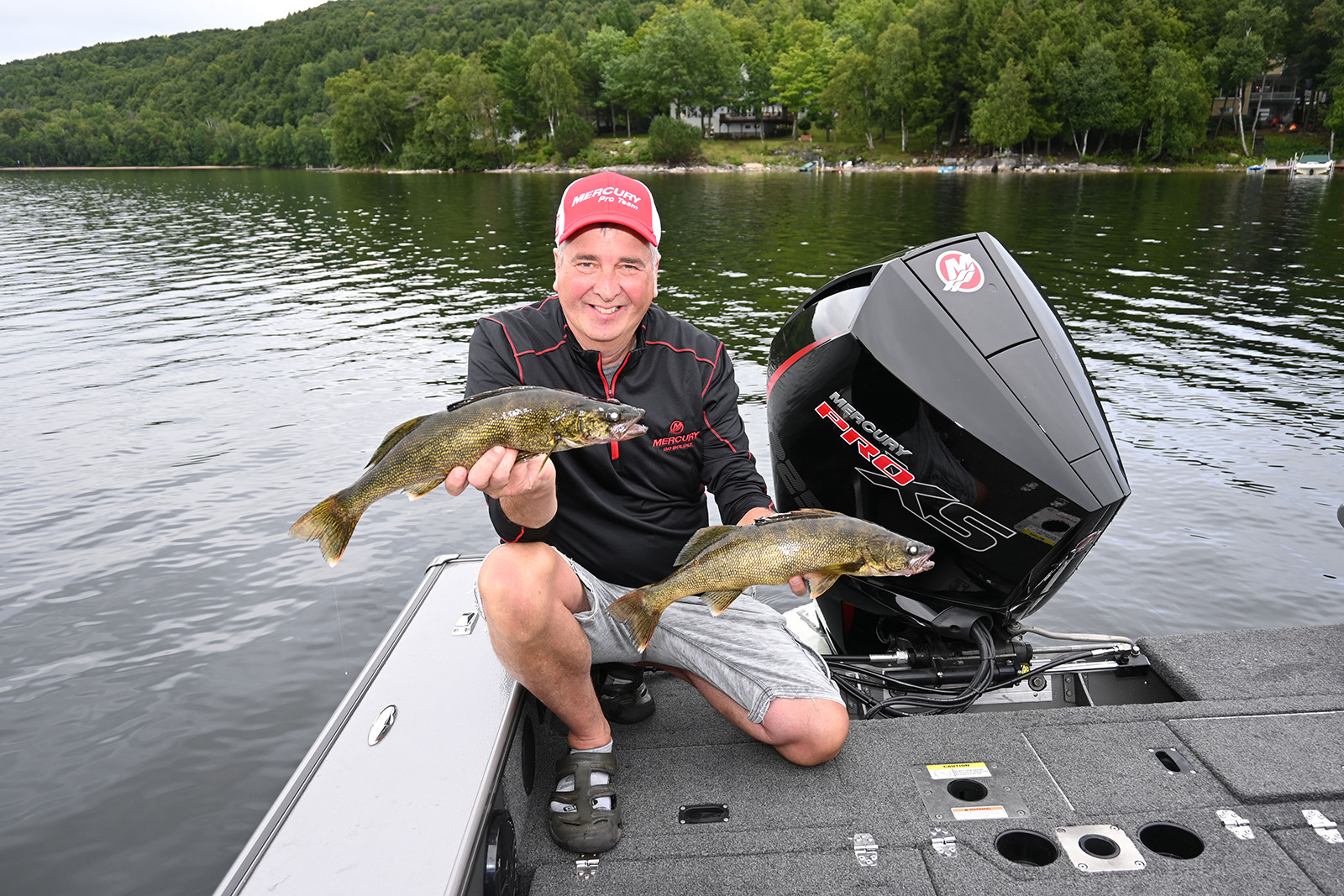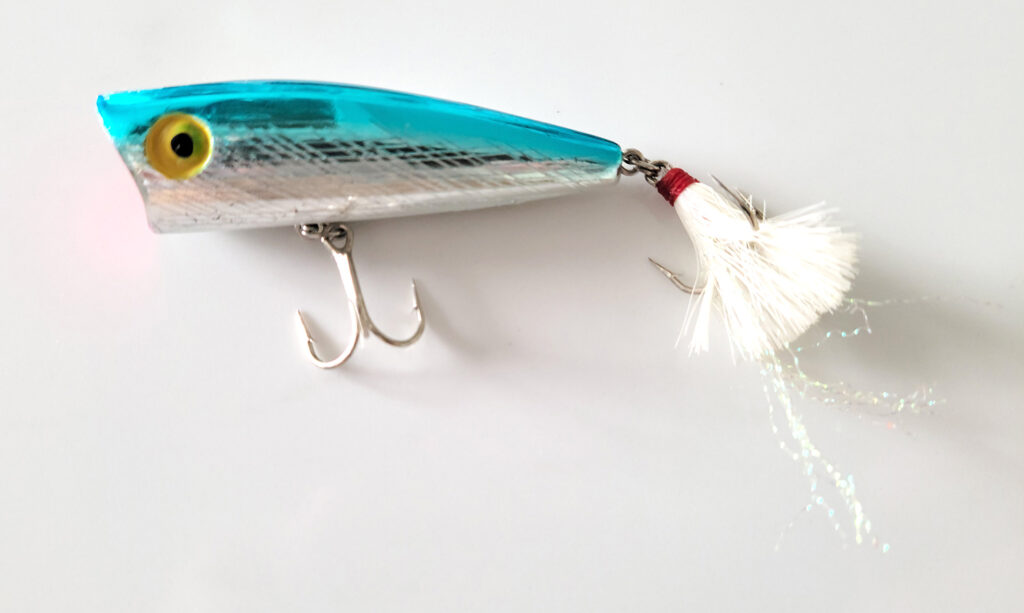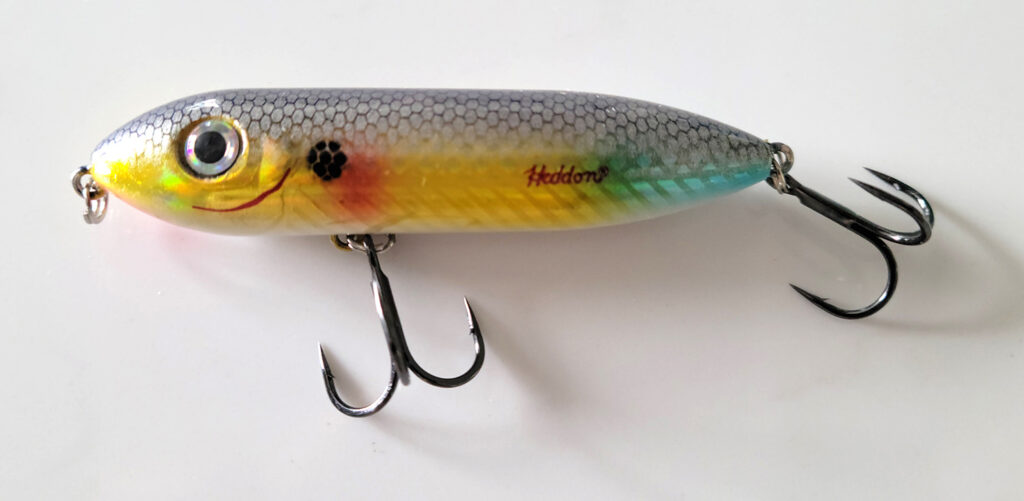Here’s how to choose a lure that matches the natural food source of your targeted species.
By Patrick Campeau
There’s an old adage that goes something like this:
“The best way to a man’s heart is through his stomach.”
As avid fishermen, this concept can apply to our approach to angling for a tasty meal of freshly caught fish. Over the years, as a professional fisherman, I have learned that the various species of game fish behave in predictable ways when presented with the appropriate lure. Knowledgeable anglers have known for decades that in order to be successful, it is essential to effectively imitate the food that your target fish species craves… as well as the foods of opportunity that a hungry fish will take, in the absence of their preferred delicacies.
It’s a question of attitude..
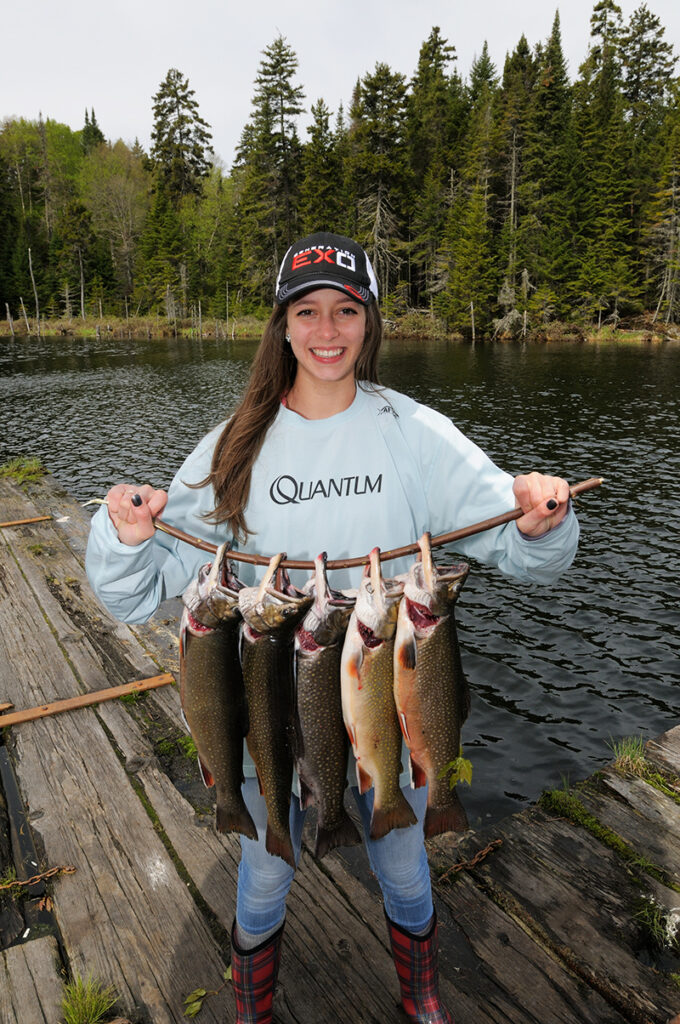
Imagine a man who is completely famished. Push the scenario a little farther and say, for instance, that he has not eaten for several days. Suddenly, on the kitchen table, he sees a steak on a plate. Although the meat does not seem to be very fresh, and it is not his preferred cut, and it’s not really cooked to his specifications, he pounces on the steak and proceeds to engulf it in a quick fashion.
This type of reaction occurs within every ecosystem, at all levels of the food chain. When gamefish are very active, they generally behave in a rather aggressive feeding pattern. Even though they are not necessarily famished, they take the lure rather than pass up the opportunity for a meal. In the real world, most fish species will consume diverse sources of food with little judgment.
When gamefish species are less active, they become more difficult to catch. They are laid back and far more selective in their food choices.
If we use the previous example of the man who would have completely devoured the steak when he was famished, imagine how he would react when he is not very hungry. He will analyze his potential meal for a little longer before consuming it.
To be a successful angler, it is essential that your lure simulates the available food for a predatory fish – if the bait is really attractive, the fish will strike the lure, even if it is less than hungry.
When conditions subside and predators become relatively silent or inactive, fishing for lunch becomes more challenging. Gamefish can become very finicky, and will only strike a lure that is to their liking, or a bait that teases them to attack. It is like the man that who would only consume a filet mignon cooked medium rare, and presented in a perfect manner – nothing else will attract his attention.
As you may have surmised, when gamefish are active and hungry, anyone can fool them into striking a lure – it doesn’t take very much effort. When confronted with more difficult conditions, anglers must resort to more strategic approaches. When the targeted species are just relaxing in their watery domain, only the most technically astute anglers will be able to entice the fish to strike a lure. These fishermen know what lures to offer the fish in order to make them react.
Lake Trout
Lake trout can be planktophagic in certain cases. In other words, if they do not have access to a large source of protein rich foods, they must satisfy themselves with plankton. They grow a lot less rapidly in this situation.
Happily, the majority of lake trout are creatures that devour terrestrial and aquatic insects, all sorts of crustaceans, worms brought upon from the spring run-off and a diverse species of small fish such as perch, suckers, sculpins, sticklebacks, whitefish, rainbow smelts, lake herring, etc. The food menu of these large predators can change from one body of water to another in relation to the local species present in a specific body of water. When, for example, perch are present in large numbers, it is important to present something which naturally imitates this species’ colour and/or its movements.
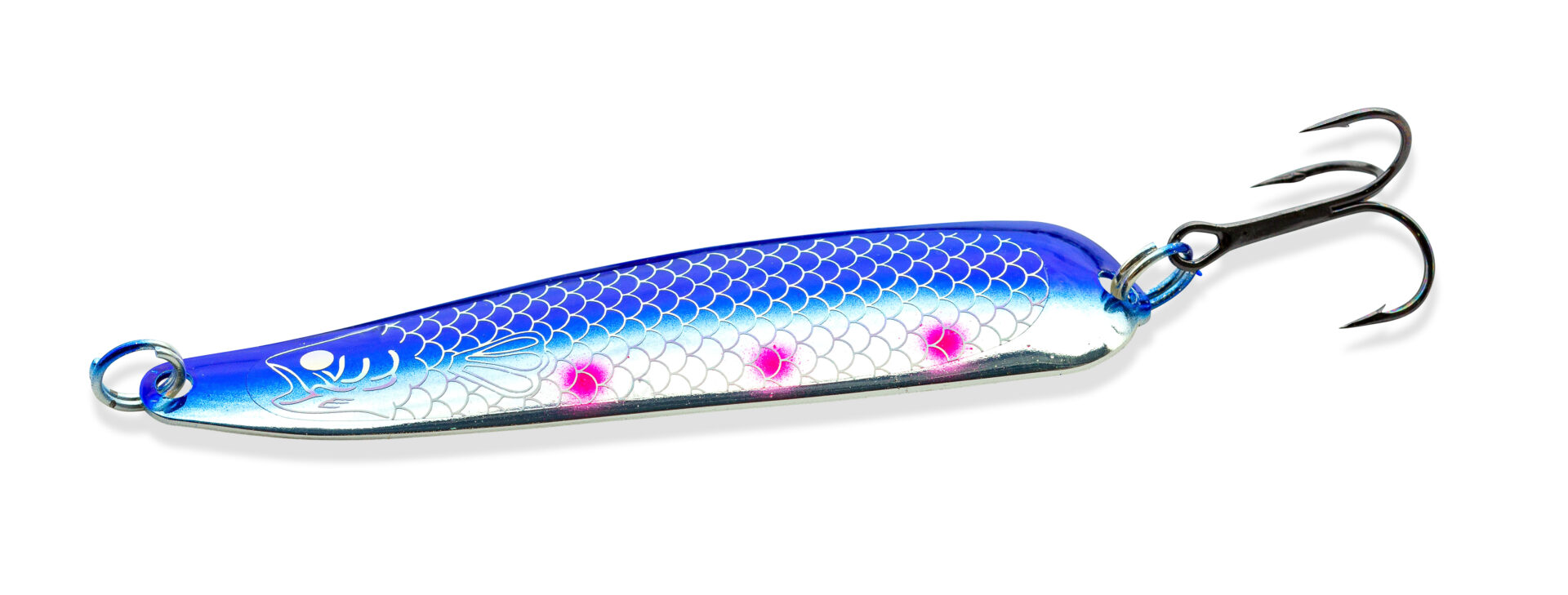
Today, several manufacturers are real artists in their artificial lure creations. For example, you only need to think of the companies Cotton Cordell, Bandit, Bomber, Norman, Rebel or Smithwick whose primary objective is to manufacture with as much accuracy as possible, the complete array of different baitfish. Thus, when you offer a lake trout a Wally Diver in a crankbait version, it truly imitates this species. It is therefore much easier to fool these beautiful fish, even though they might be finicky. If we come back to the example of the steak, in comparison with the famous Wally Diver, it truly resembles a filet mignon of the finest quality. You could then select from a vast array of offerings to match the local hatch such as the Big O, the Bandit B-Rotan, the Smithwick Suspending Rattlin’ Rogue, The Rebel Tracdown Minnow, the Rebel Jointed Minnow, the Syclops firetiger, the Dartee, the Sassy Shad, the Williams HQ, the Whitefish C80, the Savant Crusher Spoon, the YUM Scottsboro Swim Bait, or the The Quick Silver.

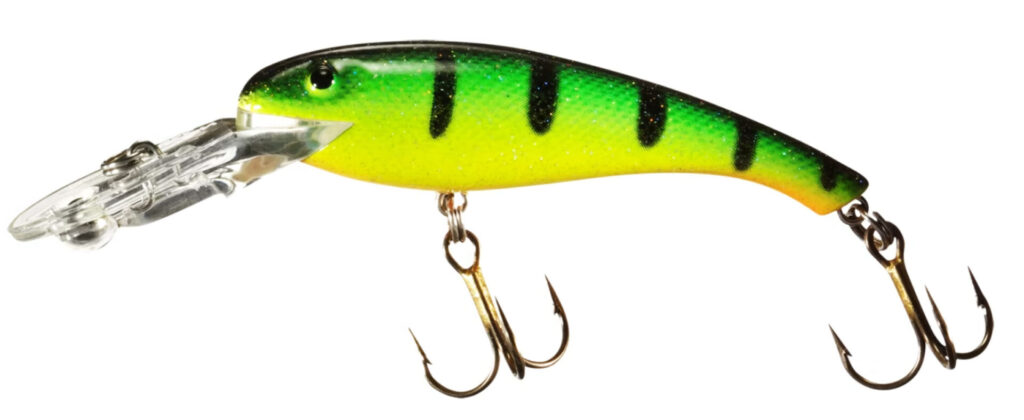
Walleye
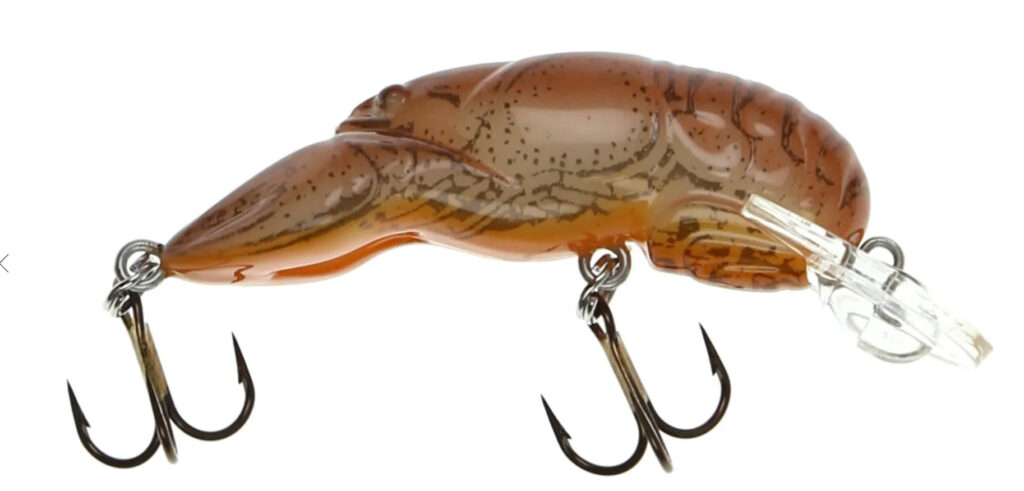
Walleye are gregarious, which means that they live and hunt in a colony. They can also form a sustainable and efficient group attack. These gamefish love sticklebacks, perch, rainbow smelt, sculpins, lake herring, frogs, leeches, crawfish, along with flying bugs, terrestrial or aquatic. To fool these gamefish, it would be in your best interest to outfit your tackle box with offerings such as the Bandit Walleye Shallow, the Bomber Long A, the Bandit Walleye Deep Shallow perch colour, the Mepps Aglia no. 3, the Sassy Shad, the Mister Twister Meeny, the Mepps Bucktail Jig, the Savant Crusher Spoon, the Double Tail and the Mister Twister Split Double Tail, the Yum FF Sonar Minnow, the Cotton Cordell Super Spot, the 4” Swim bait Sassy Swimmer, etc.
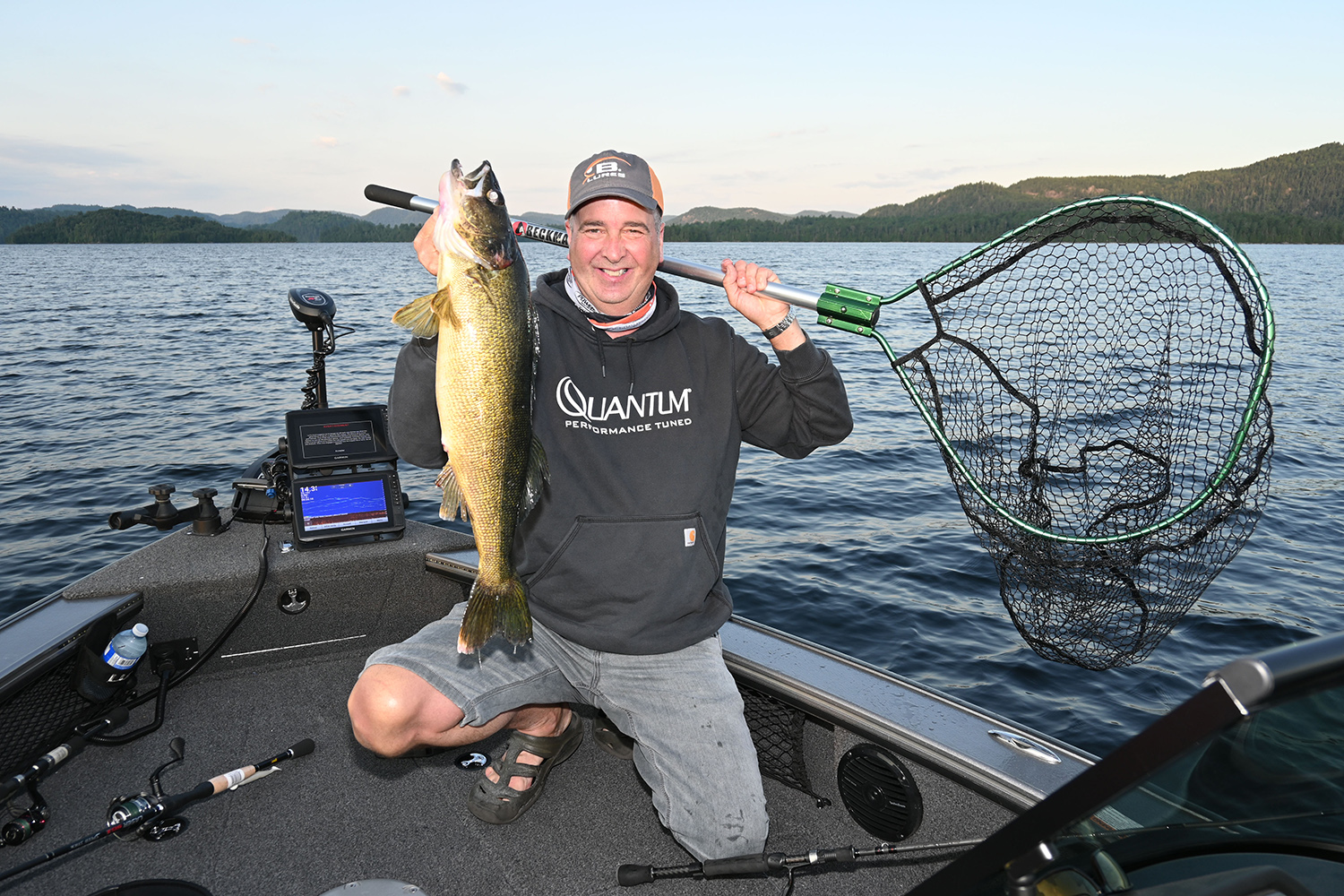
Speckled Trout
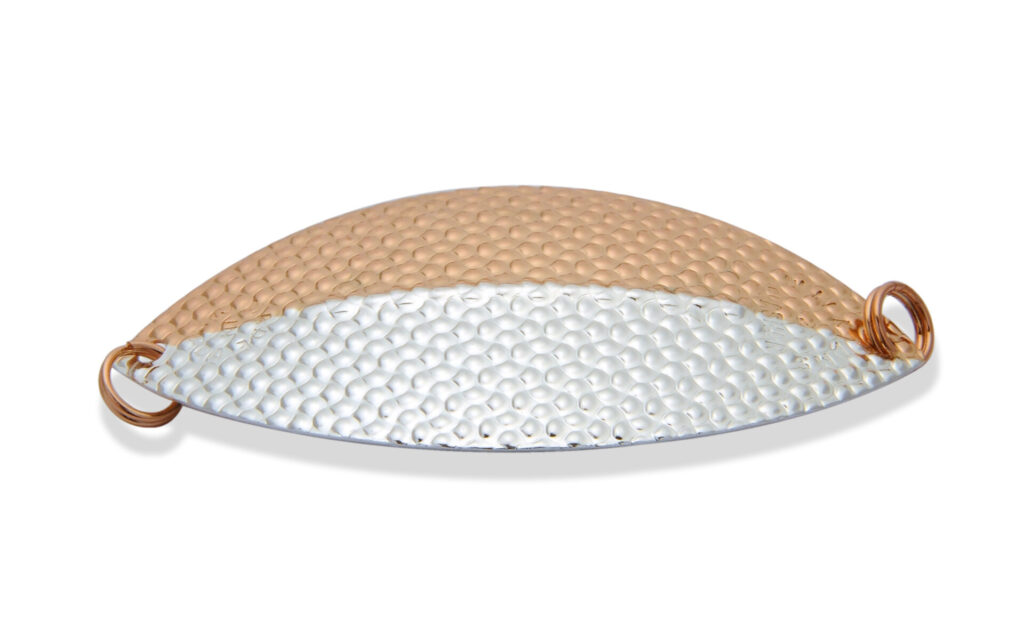
Speckled trout, in relation to their size, will opt for terrestrial and aquatic insects, minnows, crawfish, amphibians, garden worms, small snakes, field mice, leeches, etc. A variety of flies of all types are evidently suggested to tease these beautiful trout, and bait such as the Rebel Crickhopper Popper, the Wee Frog, the Rebel Bumble Bug, the Tracdown Minnow TD47, the Twister Tri-Colour Mini Tube, the Mooselook, the Williams Wabler, the Sassy Stingum, the Bobby Garland 2.5” Stroll’R, Lindy Fuzz-E Grub Jigs, etc.
Smallmouth Bass
This bass is a little bit more predictable, since 60 percent of its food diet consists of crawfish. This hard fighting gamefish will certainly appreciate a lure such as the Rebel Middle Wee Crawfish that perfectly imitates a fleeing crawfish. He will also devour several species of small fish such as suckers, chubs, aquatic or terrestrial insects, tadpoles, frogs, salamanders, etc. To match the hatch, offer them the Rebel Super Teeny Wee-R, the Booyah XCS Series, the Pop-R, the Booyah Prank, the Mister Twister Double Tail, the War Eagle Copper Eagle Double Willow Spinnerbait, etc., and you will be successful.
Final Cast
The next time you head out to angle for these predators, and you find the fishing tough, make sure you select lures that imitate as closely as possible the food preferences for that body of water. This should greatly increase your chances of success.
FOOD CHAIN BASICS
The food chain describes the sequence in which small food sources get eaten by predators and predators get eaten by larger predators. For aquatic vertebrates with bronchial respiration (aka fish), the primary source of food is made up of plankton. This word derived from the Greek term “planktos”, that signifies wandering. These organic entities cannot control their location in the water. Small fish are easily able to gobble them up as they are passing through a formation of plankton.
Then, there is phytoplankton (from greek phyton or “plant”) which is vegetable plankton, or if you prefer, a group of vegetable organisms living in suspension in the water. At one stage above in the food chain, we find the zooplankton of animal origin. It feeds on living matter.
Take note that certain species are herbivores and others are carnivores. During their first year of existence, lake trout, speckled trout, bass and walleye will consume all of these living micro-organisms which are floating in the water. Afterwards, their food diet will drastically change.
Patrick Campeau is a professional fisherman that is a three-time provincial champion member inducted into the Canadian Pantheon of Fishing.
Find out more about Patrick Campeau at www.pcampeau.com or www.facebook.com/lapassiondepatrickcampeau
Keyword : angler, boat angler, BOATING angler, expert fishing tips, Final Cast, fish like a pro, fish natural food source, fishing, fishing tips, lake trout, smallmouth bass, Speckled Trout, walleye angler, boat angler, BOATING angler, expert fishing tips, Final Cast, fish like a pro, fish natural food source, fishing, fishing tips, lake trout, smallmouth bass, Speckled Trout, walleye
